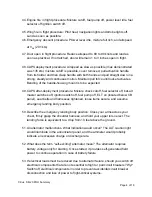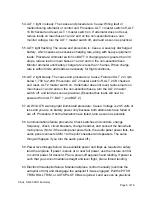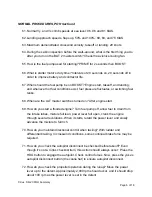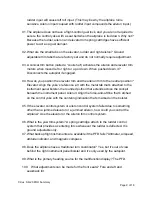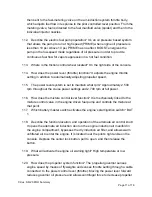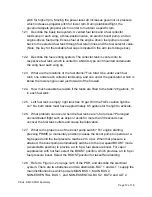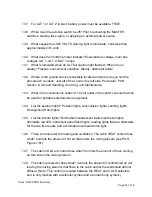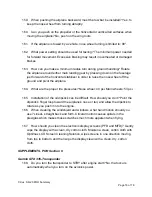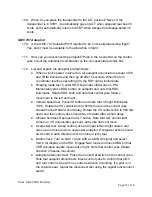
pressure, oil pressure, and oil temperature gauges; tachometer; airframe
parachute, and airplane flight manual.
34.When is the vertical speed indicator, multi-function display, and cylinder head
temperature gauge required? Never.
EMERGENCY PROCEDURES, POH Section 3
35.Maneuvering speed: 3,150 lbs-133, 2700 lbs-123, 2,300 lbs- 114 KIAS.
36.Best glide speeds: 3,150 lbs- 100, 2,600 lbs- 92 KIAS.
37.Emergency landing speeds: flaps up- 89, flaps 50%- 83, flaps 100%- 78 KIAS.
38.Engine induction-system fire during start procedure: Mixture cutoff, fuel pump off,
fuel selector off, power lever full forward, engage starter.
39. Engine failure in flight procedure: Establish best glide, mixture full rich, switch
fuel tanks, fuel pump on boost, alternate induction air on, ignition switch check
both.
40.Engine airstart procedure: Battery master switches on, power level ½” open,
mixture rich, switch fuel tanks, ignition switch on both, fuel pump onboost,
alternate induction air on, alternator master switches off, engage starter if prop
not windmilling, slowly increase power lever, alternator master switches on when
engine starts.
41.If a partial power loss occurs or the engine starts running rough, what initial
action should be performed: Fuel pump on BOOST.
42.If the engine fuel pump fails completely, will the fuel pump’s boost position
provide enough fuel to keep the engine running? No, but it will keep the engine
running of the engine pump has a partial failure.
43.Propellor governor failure procedure: If RPM will not increase, check oil pressure
and land as soon as practical. If RPM overspeeds or will not decrease, adjust
power lever to keep RPM within limits, reduce to 80 knots, and land as soon as
practial.
Cirrus SR-20 POH Summary
Page 3 of 18




